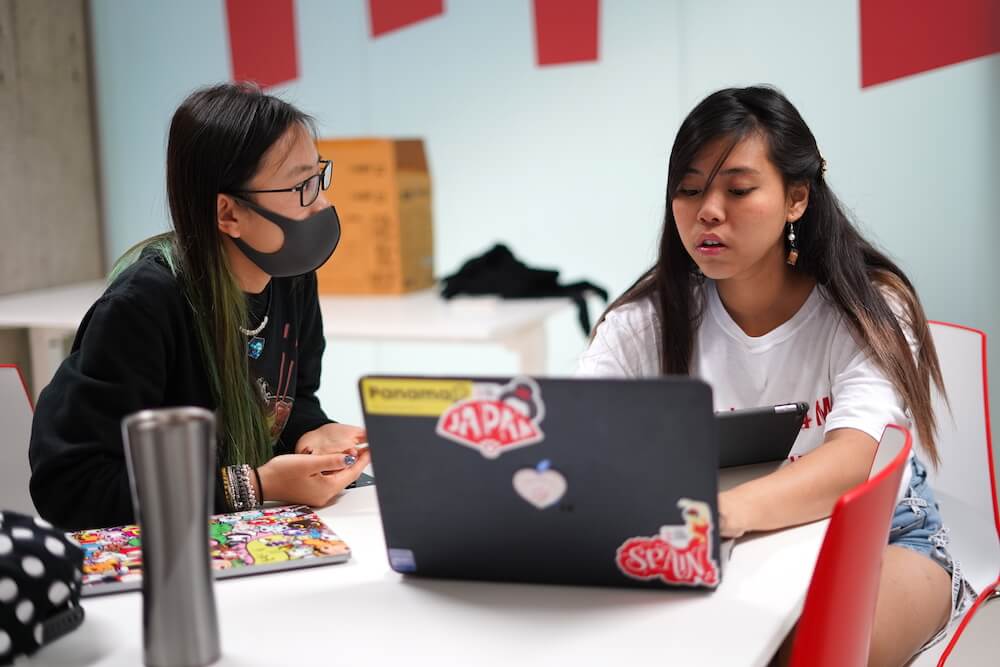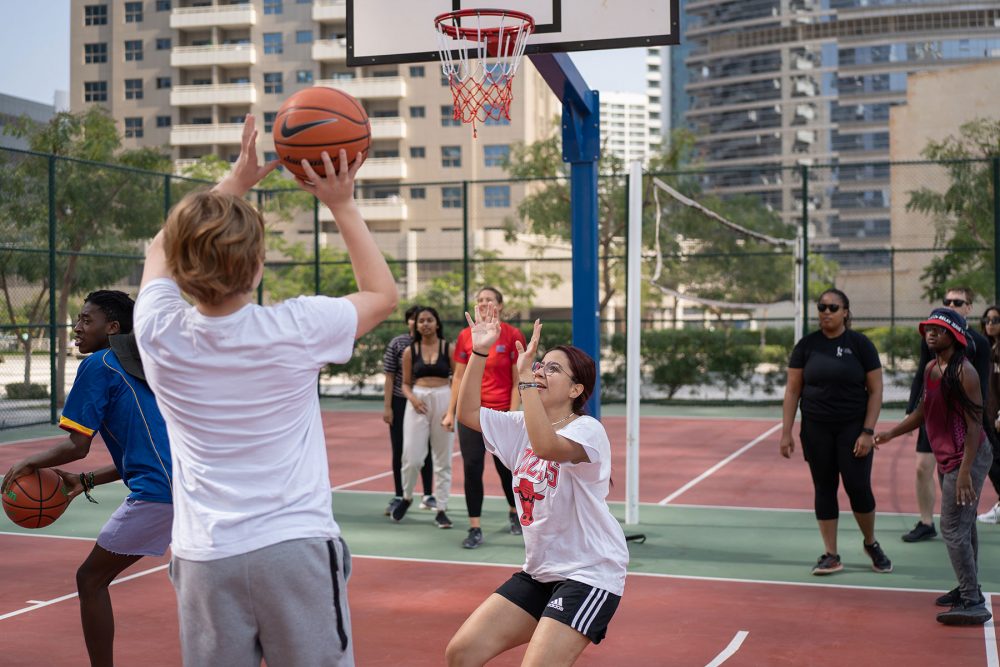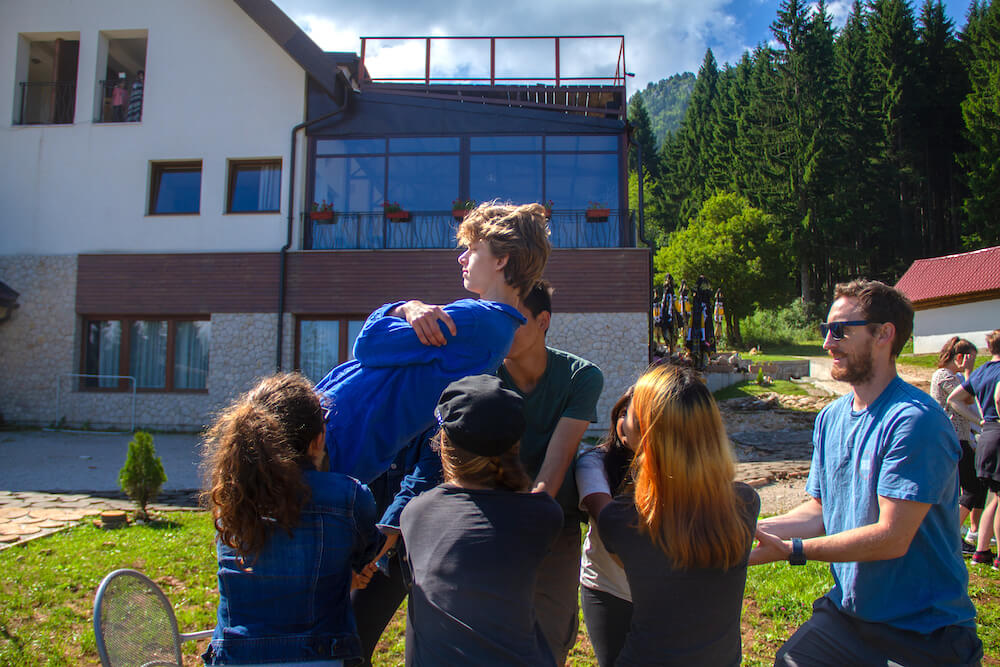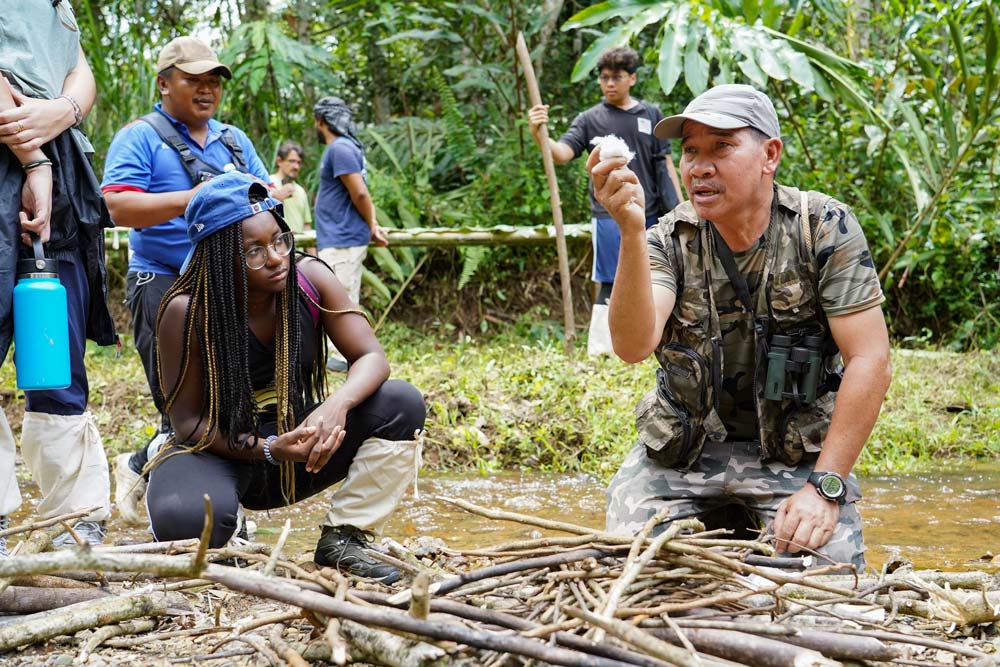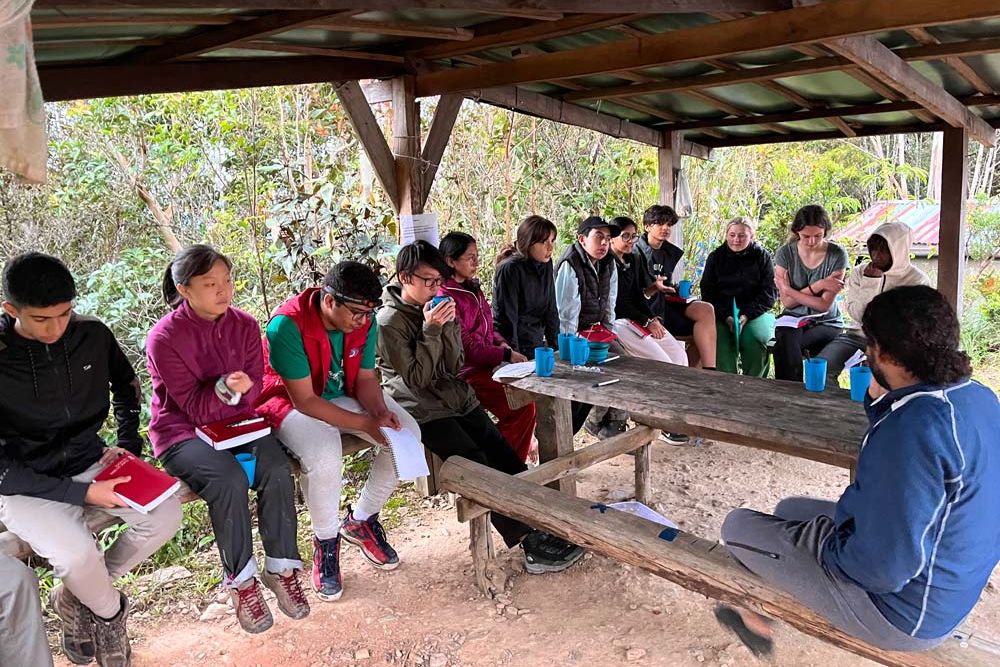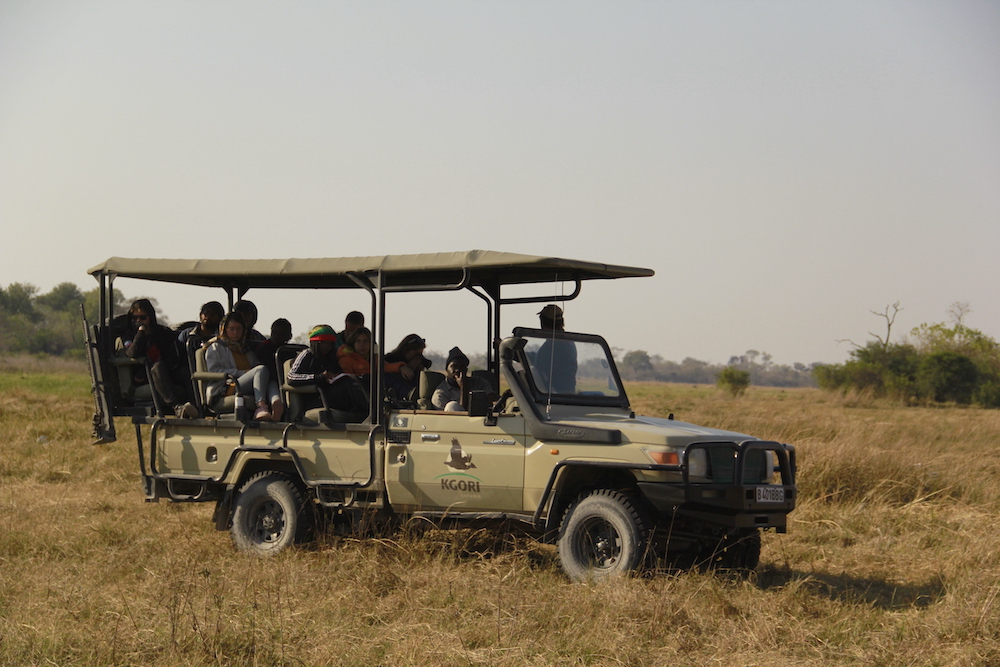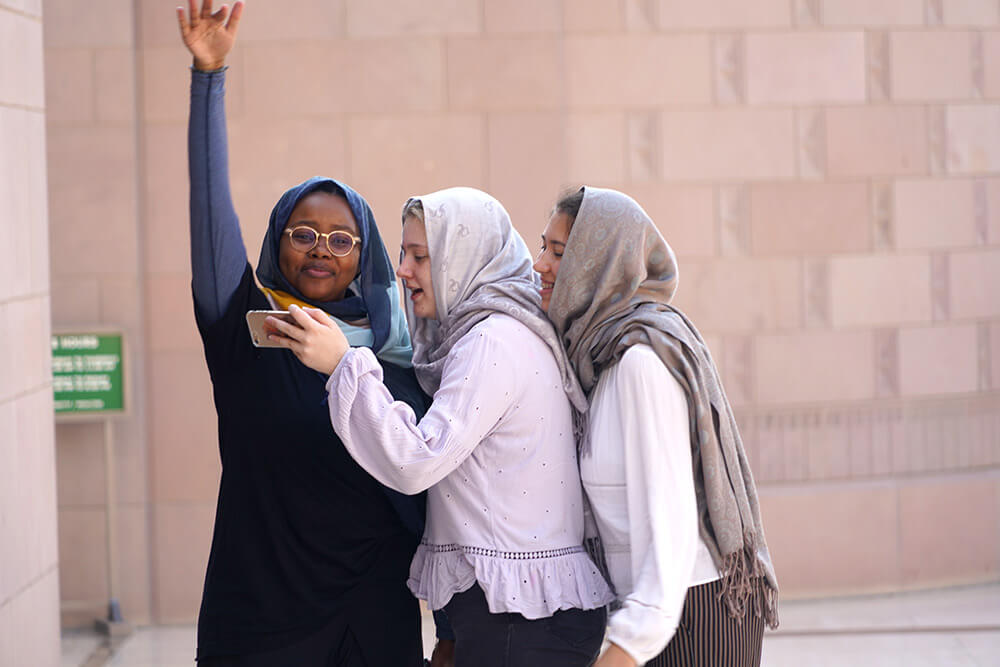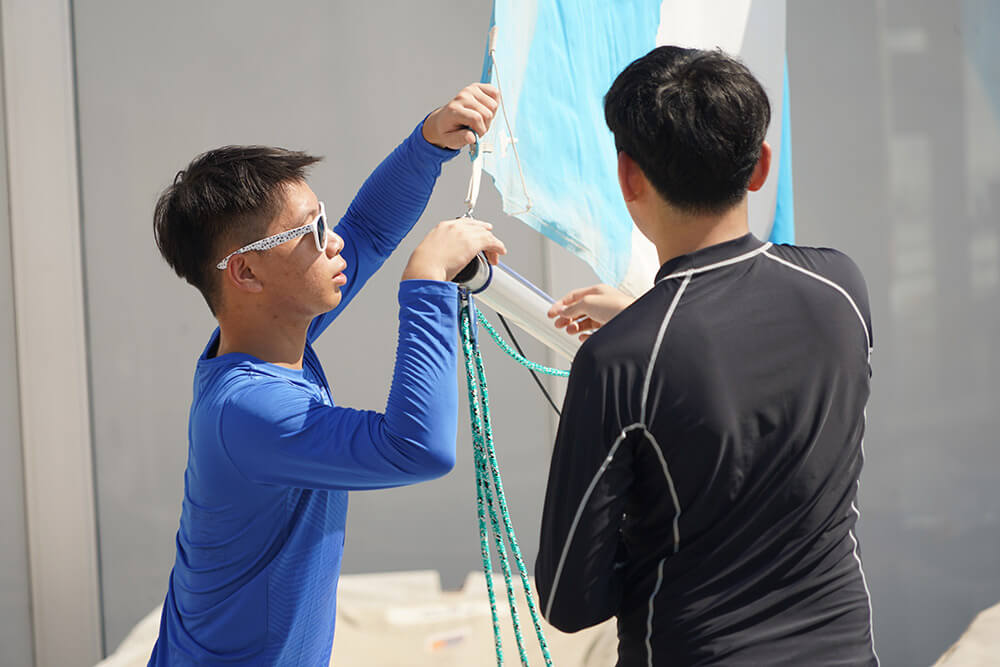THINK Global School founder, Joann McPike, has been traveling since she was 18; she has visited more than a hundred countries and has learned three languages. When she and her husband, Harry, realized that the best way to educate their child was to go to places and to learn about the World Being around the World, they founded their own school. Russel Cailey, former TGS Principal and now the managing Director and Architect of the Think Learning Studio, spoke about the actual difference between the traditional exam-oriented curriculum and their project-based learning Changemaker Curriculum, the benefits and some challenges as well as the admission process for teenagers who are to be sent half way around the world.
THINK Global School — The World’s First Nomadic Boarding School. It was founded in 2010 by a married couple from New Zealand, Joann and Harry McPike. Annually, about 60 students aged 15–18 from more than 30 countries study here. During the three years, every student manages to live in 12 countries of the world. There are no formal classes in the school. The system is built on the principles of project-based learning partially associated with the country of stay. The project students pair up or work in mini groups under their teachers’ supervision. They are combined into interdisciplinary modules that are co-taught.
How It All Started
From the very beginning, Think Global School was designed as a traveling experience, although at first, the school was following the IB traditional curriculum. When I joined the school 12 years ago, it was a lot different from what it is now — the school was hard to structure because of traveling and the demands of the IB and it was difficult to establish relationships since the countries kept changing. We couldn’t just go to a place, unpack everything, and start learning. Everything had to be built from scratch. This caused some challenges, yet it was an incredible experience.

Photo: Russel Cailey, Think Learning Studio
After a few years, we started feeling that the IB program wasn’t working. We just noticed that our students did not fully engage in their school life. The graduating class was always studying, getting ready for exams instead of exploring the real world, the place where we were staying. I remember we were in a hotel in Tokyo and the 12th grade was supposed to go for a walk around the city at night and I was wondering where they had gone. And the eleventh graders were like: “Oh, they are in their rooms studying, preparing for their IB exams and panicking.” That was the moment when I thought: “Oh my God, what are we doing? This is crazy! We need to change, to embrace real-world learning.”
How the Concept Changed afterwards
Around that time, our former headmaster, Jamie, joined our school and he pushed the idea of Project-based learning. We sent four people around the world to map out what the new curriculum could look like. When they finished, we said: “Ok, let’s go for it” and within two years we wrapped up the IB program stage-by-stage and began the Changemaker Curriculum. Instead of going to different countries, we did the same countries for three years where we built some great relationships and friendships. We launched two groups of project-based learning schools that traveled simultaneously.
The organization that had given us a license (Western Association of Schools and Colleges — EdDesign Mag) trusted us, believed in us. So, we had an opportunity to do something, to stretch the traditional boundaries of education, yet, I think something the world needed. That’s how we decided to place special emphasis on learning through experience and worked out our own project-based and place-based learning curriculum, where some of the projects are related to the country of stay.
![]()
We do not share the philosophy where the exam determines who you are and what you are capable of. Teachers at our school don’t assess students by an exam, instead, we have three “mastery” levels and it’s up to the student to decide in which area they want to be a novice, specialist, or a master. Whereas the current system demands you to be perfect in everything! We do not make it our goal to prepare the students for exams. We prepare them to be innovators, problem solvers and great thinkers.
However, there is the option for our students to follow the AP (advanced placement) program and go for the final examination at the Testing Center organized by our colleagues in Greece. Usually, this is not more than about a fourth of the total number of students. Now, for example, there are several Vietnamese and British students taking this program. However, they can study for AP only in their free time, outside of project-based learning. We also have a special guidance counseling program — a Think Beyond course — during which we help students to choose their future activity or university. The teachers issue their credit grades based on the results of project-based learning, so that they can submit documents. These grades are included in the school certificate and are considered for admission to the university.
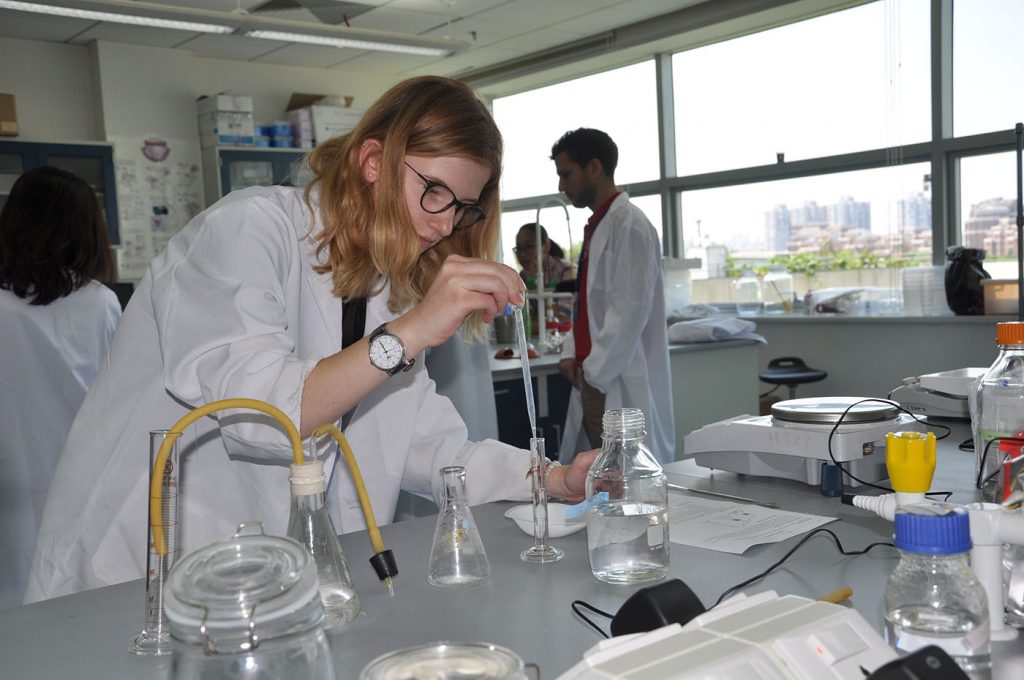
Photo: THINK Global School
What Is the Learning Process Structure?
Our students travel across the world in two groups. They have different routes, although both always lead to Greece. It has become a sort of hub or even our home. During the first school year, children visit India, Botswana, and Japan. The next year they live in China, Oman and Panama. In the third year, they visit Australia, Bosnia, and Chile. Sometimes, we do change countries depending on the global situation, pandemic and other factors. A seven weeklong semester is dedicated to each country. The first week, students study online at home — they prepare for their projects and get ready to move to the country of next stay. The next six weeks are dedicated to working on projects and subjects as well. Before starting the next term, the students are given a week to rest and focus on their service learning projects that can be done in their local environment. Usually, they go to their home country or somewhere else.
![]()
We have about 60 learning targets; each learning target family has approximately 6–7 learning targets. The student chooses the project, let’s say, building a motorboat, an architectural project cost calculation or developing a blockchain. Within each project, every student chooses 7–8 learning targets from various subjects. Also, they set the level they want to achieve regarding each target — that of a novice, a specialist, or a master. Then, this can be converted into credits for those who are going to a university.
Photo: THINK Global School
About 60% of school time is spent working on interdisciplinary projects — both personal and teacher-led. Ten more percent is spent on service learning — the projects aimed at improving the living standards of the community the class lives in. The same amount of time goes to the “Inside out” learning course — our wellness program devoted to mental health and psychology. Then, they also have the career-oriented course “Think beyond”. By the end of their education, they also have a final Mastery Project, which they usually enjoy the most and this project closes out their TGS experience.
However, sometimes projects can be a little challenging for students. I remember a module in Oman that we pitched a lot — about Artificial Intelligence. It was a great module but for a 7-week module it was just a lot! Students were freaking out and a bit depressed saying “we can’t do this! It’s too hard.” They had to build a real boat, then they had to attach a motor and then program the motor using Bluetooth technology to make it move. Halfway through, kids were getting frustrated. But the brightness of that is exactly what PBL is about — even if something doesn’t go that well, there is so much to reflect on and there is so much to talk about! If the boat is not moving perfectly well with this Bluetooth — it’s ok because PBL is about the process, and you still have your project process portfolio. You still have that journey of learning.
That’s the great thing about this situation. We do pay special attention to failures because it is the “failed” situations and projects that actually make it possible to learn — to see the mistakes and correct them.
What Is the Most Challenging during the Transition from ”Classical” to Project-based Learning?
![]()
One of the biggest challenges is “de-educating” teachers and students.
Teachers, as well as students are so well-trained within the traditional school to be passive, to not be creative, to focus on memorizing rather than design thinking. The inner ‘”rearrangements” usually take 3 to 6 months. That’s hard sometimes. But once it happens and you see the different student — the “light bulb”, it’s amazing, it’s literally liberating. When we find great educators, we almost need to retrain them since they were also previously trained within a strict exam-based system. We teach them to focus on the work within the framework of interdisciplinary courses. Each module is co-taught. And there has to be intentionality about how to put a portfolio together, how to deliver the interdisciplinary learning, how to use technology systems and so on.
![]()
To be a TGS is partly to constantly keep reimagining projects, to keep them up-to-date, to keep upgrading and reimagining that curriculum. And to keep the curriculum up to that pace is also a challenge sometimes.
Who Works at Your School and How Are the Duties Distributed?
Each group has seven educators, 6 would-be PBL experts (project-based learning experts). They teach various subjects: one for Math, two for Sciences, one for Humanities, one for Arts, and a specialist in academic writing. Even though we have an interdisciplinary approach, we still identify their subject areas. Then, we have a director, a counselor, and a logistics director. We also have a media specialist to take all the photos, to film and do all the editing. That makes 11 on each team and then sometimes, we would have interns and young teachers join us for some time to get some skills and experience.
How Do You Choose Where to Stay and to Study in Different Countries?
Over time, we have developed a certain structure and strategy. Yet, this still depends on the place we go since countries are very different. For example, in Panama, this was a hotel, but it can be a hostel as well. In Malaysia, for example, they rented the whole hostel and they love it. They can live there and have their classes as well. Different countries will need a different approach. We used to partner with schools, but we hardly do that now, because our model is very different and doesn’t usually fit normal school schedules. For example, very often our students follow their individual schedule, without any bells or other timeframes, so we don’t really fit the conventional school routine. Now, we try to partner with some creative spaces to use as our classrooms or project work, something like WeWork or similar, we don’t really aim to be attached to an educational establishment.
Photo: THINK Global School
Can Anyone Apply to Study at your school and How Expensive Is It?
The admission process is rather long and detailed. We ask the students a series of essay questions that they have to answer and submit. We interview them and their parents multiple times. As the director, I would interview them again at the end of the process to say: “Yes, this student can come, or the student is not ready to join the school.”
TGS is a great school, but it is not for everyone. Students can be amazing at other schools too; they don’t have to study here to be incredible. There are psychological things that we look out for and then we do test them on basic Math and basic English since we teach in a common language that is English.
![]()
The psychological factor is crucial for us. Students should feel responsible for their own learning process. We need to understand if both students and their parents are ready for that kind of educational journey, and whether parents are actually ready to let their child go. We are selling the ownership of your own learning experience, not the travel. That’s important.
So, we ask them for some examples of independence: if they have been away from home, if they attended some camps, are they used to managing their own space — something like that. We emphasize e three major aspects: signs of independence, parents ready to let them go, taking ownership of their work, being creative. We also explain: you shouldn’t choose our school if you just want to travel. TGS is not a place you go to escape your world and your problems. That would be the wrong reason to go. The school won’t be helpful. We need to see that parents are supportive. Last year, for example, we had to say no to a potential student, because during the interview she mentioned several times that she consulted her mental health counselor almost every day. We decided that such a student wasn’t ready to travel yet. It just could be dangerous for them.
![]()
Education at our school costs $90,000 per year. It is rather expensive. Yet hardy any of our students pay the full amount. The Foundation gives a lot of money in terms of scholarships for kids all over the world to study at TGS. The foundation covers 50–70% of costs for education, the rest is paid by the parents.
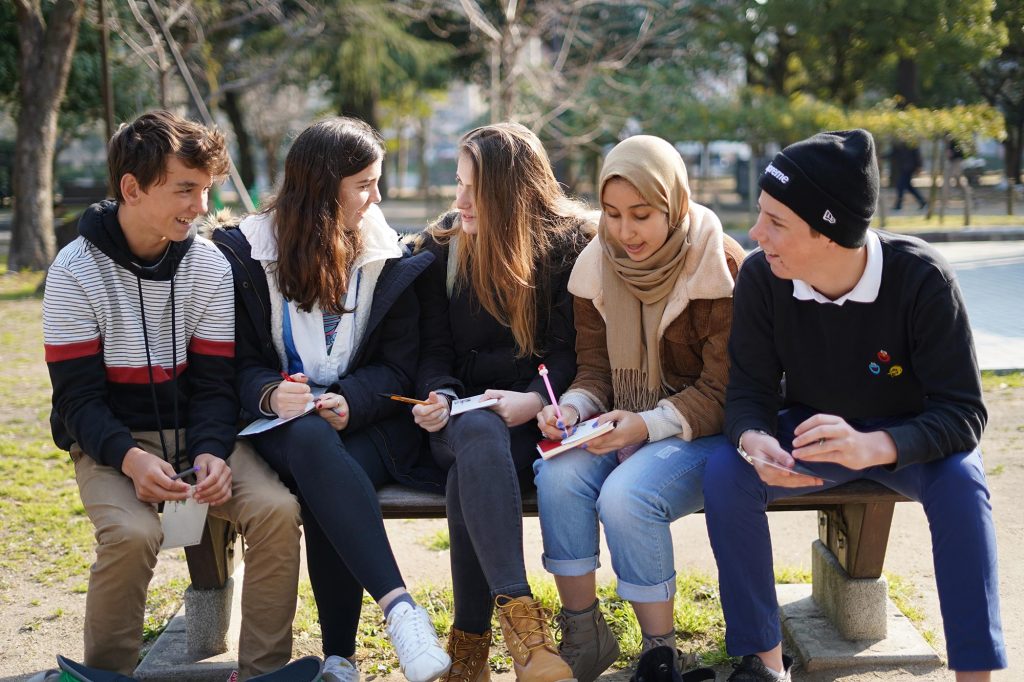
Photo: THINK Global School
How Many Applications Do You Receive Annually? Where Are Those Candidates from?
Each year, we see hundreds of applications. But we also noticed a shift in geographical location. Lately, TGS has been getting more and more popular within countries of the former Soviet Union, for example, in Kazakhstan or Azerbaijan. We have a lot of candidates from India, Vietnam, Brazil, Mexico, and north Africa — Morocco and Egypt. Those are the popular hot spots right now.
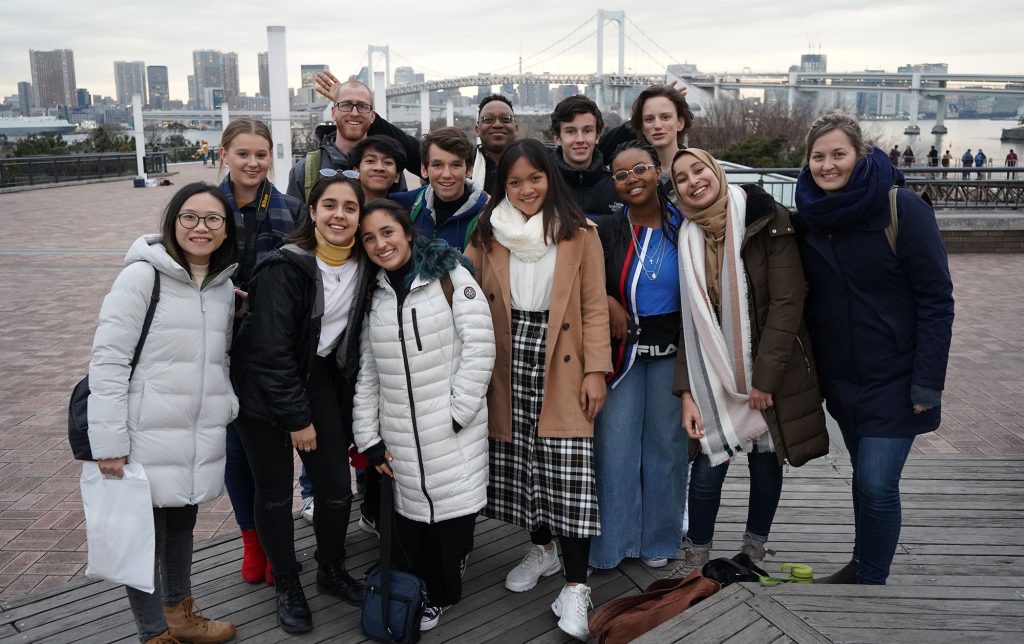
Photo: THINK Global School
If I Choose to Send my Child to a Traveling School, I Would Worry about Safety. How Do You Deal with This?
This is a very important area of responsibility for us. A lot of our staff members are trained in the WFAR course (Wilderness First Aid Responder course). Also, the school has joined the ISOS international organization. That means that in case of emergency or crisis, the experts from this organization help us decide what to do and help us evacuate if needed.
We also have so-called “city specialists” — people who are well-connected to the place we are staying. We work with that person for about 6 months before we arrive. We ask them about the best place to stay, possible places to use as our classrooms, which transportation to use (is it safe to use public transportation or better to hire a bus), the districts to avoid. Also, we would have a “freedom zone” in each place, where they can go by themselves. Usually, it’s somewhere around the city center. Then, there would be a kind of semi-freedom zone where they can go in twos and threes, but never alone. And then, there’s a zone where you can’t go unless you have special permission.
We also have very strict rules of conduct. Students have to be back to the residences at 10:00 PM. They have to be in their bedrooms at 10:30 PM. Apart from that, there are four non-negotiables: drugs, sex, physical violence and alcohol. All these are reasons for immediate expulsion without any second chances. No questions, no begging. Why such a strict approach? The main reason is the school’s reputation — we can’t risk our reputation anywhere in the world. We cannot allow the thought that one of our students will violate the law and standards of behavior expected at home.
Photo: THINK Global School
![]()
On our phones, we have a special app that tells us the students’ location. Students have to check in twice a day. They know it is only for their safety in case something goes wrong and we need to find them quickly.
Can You Share Any Story When You and the Kids Got Really Scared? What Did You Do in Case of Danger?
I remember one great story. It happened also in Oman. We were on an expedition. And we went to this beach and the idea was to put up tents and to cook some great food and then watch the stars and it was just going to be lovely! Anyway, Oman has a severe storm maybe once in two-three years. The night we were there — the biggest and craziest storm began. Tents were flying through the air. Everything was flooded. It was that bad. All the tents were destroyed. All the kids were in the vans by the end of the night, upset and feeling miserable. We actually were encircled by two storms — it was really bad. The teachers were out trying to grab the computers, the phones and everything that was left out there. And I remember getting out of the camp site going to a gas station and we just lined up anything that was left and wasn’t destroyed. So, I was like: “C’mon guys! Let’s make the best of this day! Let’s fix this!” And they got really positive and supportive. And the kids on the other bus were kind of depressed, they were like: “Oh, my God! What shall we do?” And it was so amazing to see the positive attitudes the students had, looking back, this had been instilled after challenging terms in Botswana during the Rite of Passage where we prepare for these situations. Even two years later, the students were talking about that night in Oman — it made such an impression on them. Interestingly enough, Joanne was with us that night and she was on the trip as well. It all was just crazy! Yet, the learning experience was great!
Photo: THINK Global School
You Have Such Remarkable Experience with What You Have Established! How Do You Share Your Experience with the World?
Think Learning Studio is designed exactly for that purpose. We have about 1,500 various projects that we can begin to share with anyone with whom we partner. And any project can be adapted to the context of the country. We have created an educational center for teachers and educational leaders to offer both training and consulting.
We have two forms. First of all, we want to help other teachers who are not trained in project-based learning and help them take the first steps. But also, strategically, if we do expand TGS in other countries, we need to show the teachers how to do it: how various school subjects can be combined into a single project, how the process should be managed when there are 100 kids in the group and each of them has their own project.
We also would like to bring different schools together, different educators together. We can be there for them as a sort of “crutch”: you can still walk by yourself, of course, but you can have a little support for some schools to help them on their way.
We already have a partner in India and Sydney, Australia. We have held a training course for 50 teachers in Mumbai. On a pilot basis, we have worked with a famous school in the United States — Mount Vernon School. We have also held the course for 50 teachers in Columbia. It’s very inspiring to do something like that!
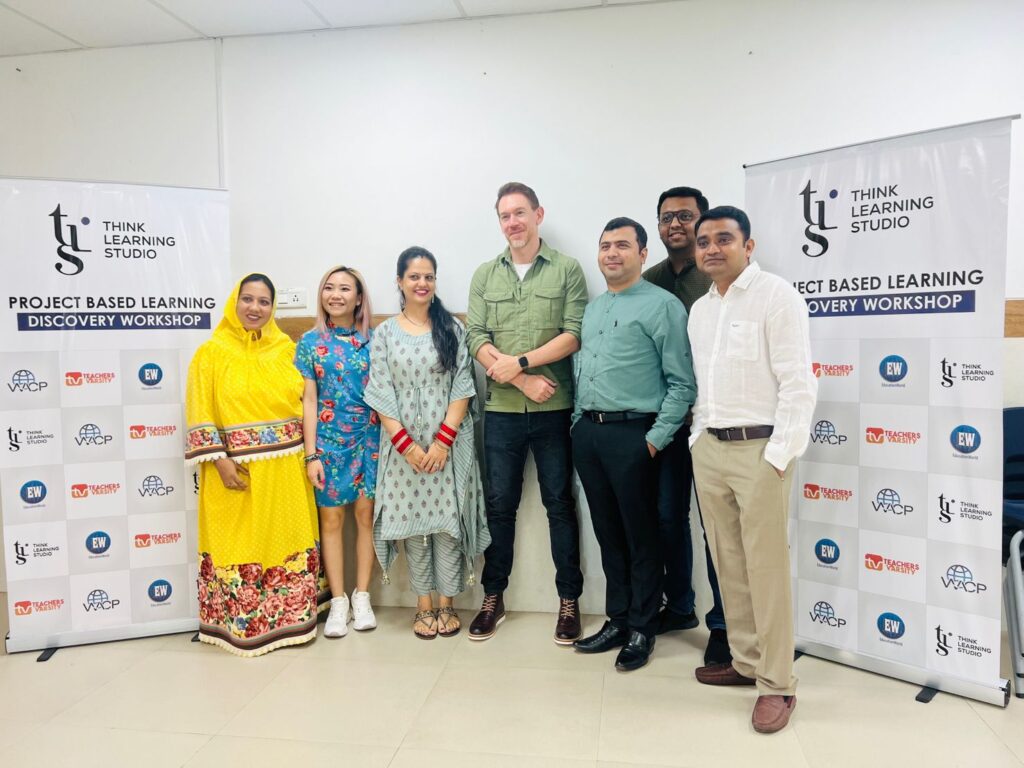
Photo: Russel Cailey, Think Learning Studio
How Do Your Graduates Find Their Place in Life? Are There Any Challenges? What Do They Do?
We had some criticism like “you might be damaging the students”, but no, we’re definitely not. The experience has shown that all the graduates always find their ways. We’ve got students who have launched their own businesses, students who work at universities — researchers.
Our students from Afghanistan to Mexico join various exciting universities and organizations, for example, one student is currently at the World Bank and lives in Washington.
Students are now applying to diverse universities with varying levels of project-based learning; when students do enter universities after school, they very often seek a more dynamic and place-based experience. The response from universities to us has been very nice as well, they do like the curriculum. So, student success is tangible. It’s there, it’s real.
